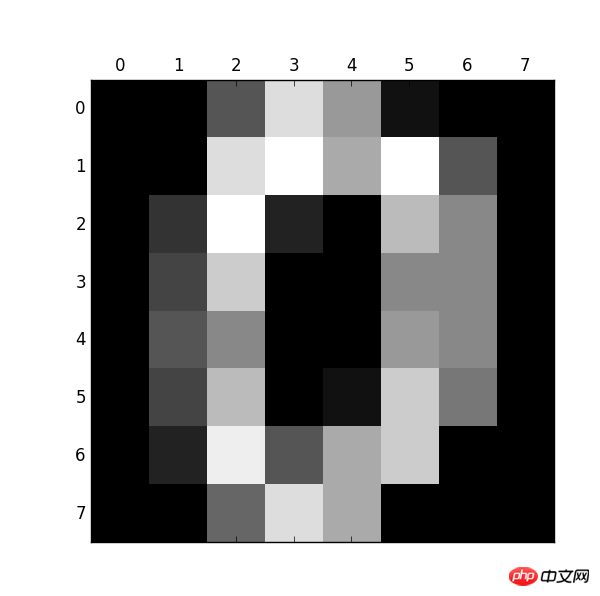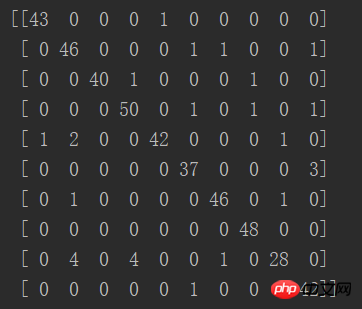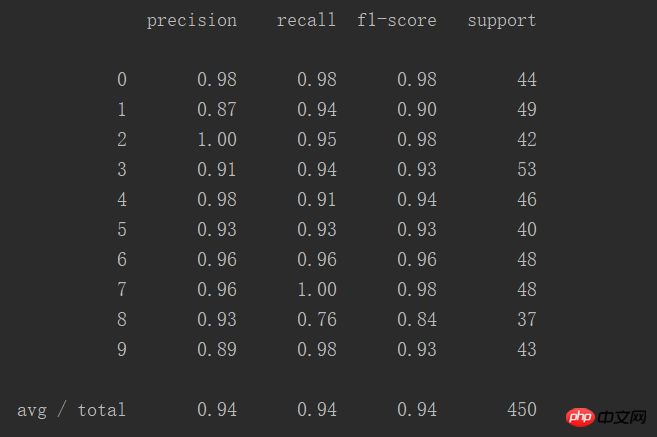 Backend Development
Backend Development
 Python Tutorial
Python Tutorial
 Neural network (BP) algorithm Python implementation and application
Neural network (BP) algorithm Python implementation and application
Neural network (BP) algorithm Python implementation and application
This article mainly introduces the implementation of neural network (BP) algorithm and simple application in Python in detail. It has certain reference value. Interested friends can refer to it.
The examples in this article are shared with everyone. The specific code for implementing neural network algorithms and applications in Python is provided for your reference. The specific content is as follows
First use Python to implement a simple neural network algorithm:
import numpy as np
# 定义tanh函数
def tanh(x):
return np.tanh(x)
# tanh函数的导数
def tan_deriv(x):
return 1.0 - np.tanh(x) * np.tan(x)
# sigmoid函数
def logistic(x):
return 1 / (1 + np.exp(-x))
# sigmoid函数的导数
def logistic_derivative(x):
return logistic(x) * (1 - logistic(x))
class NeuralNetwork:
def __init__(self, layers, activation='tanh'):
"""
神经网络算法构造函数
:param layers: 神经元层数
:param activation: 使用的函数(默认tanh函数)
:return:none
"""
if activation == 'logistic':
self.activation = logistic
self.activation_deriv = logistic_derivative
elif activation == 'tanh':
self.activation = tanh
self.activation_deriv = tan_deriv
# 权重列表
self.weights = []
# 初始化权重(随机)
for i in range(1, len(layers) - 1):
self.weights.append((2 * np.random.random((layers[i - 1] + 1, layers[i] + 1)) - 1) * 0.25)
self.weights.append((2 * np.random.random((layers[i] + 1, layers[i + 1])) - 1) * 0.25)
def fit(self, X, y, learning_rate=0.2, epochs=10000):
"""
训练神经网络
:param X: 数据集(通常是二维)
:param y: 分类标记
:param learning_rate: 学习率(默认0.2)
:param epochs: 训练次数(最大循环次数,默认10000)
:return: none
"""
# 确保数据集是二维的
X = np.atleast_2d(X)
temp = np.ones([X.shape[0], X.shape[1] + 1])
temp[:, 0: -1] = X
X = temp
y = np.array(y)
for k in range(epochs):
# 随机抽取X的一行
i = np.random.randint(X.shape[0])
# 用随机抽取的这一组数据对神经网络更新
a = [X[i]]
# 正向更新
for l in range(len(self.weights)):
a.append(self.activation(np.dot(a[l], self.weights[l])))
error = y[i] - a[-1]
deltas = [error * self.activation_deriv(a[-1])]
# 反向更新
for l in range(len(a) - 2, 0, -1):
deltas.append(deltas[-1].dot(self.weights[l].T) * self.activation_deriv(a[l]))
deltas.reverse()
for i in range(len(self.weights)):
layer = np.atleast_2d(a[i])
delta = np.atleast_2d(deltas[i])
self.weights[i] += learning_rate * layer.T.dot(delta)
def predict(self, x):
x = np.array(x)
temp = np.ones(x.shape[0] + 1)
temp[0:-1] = x
a = temp
for l in range(0, len(self.weights)):
a = self.activation(np.dot(a, self.weights[l]))
return aUse your own defined neural network algorithm to implement some simple functions:
Small case:
10 Close to 1
Second example: Identify numbers in pictures
Import data:
from NN.NeuralNetwork import NeuralNetwork import numpy as np nn = NeuralNetwork([2, 2, 1], 'tanh') temp = [[0, 0], [0, 1], [1, 0], [1, 1]] X = np.array(temp) y = np.array([0, 1, 1, 0]) nn.fit(X, y) for i in temp: print(i, nn.predict(i))
 Number 0
Number 0
from sklearn.datasets import load_digits import pylab as pl digits = load_digits() print(digits.data.shape) pl.gray() pl.matshow(digits.images[0]) pl.show()

This table more intuitively shows the prediction accuracy:
A total of 450 cases, the success rate is 94%
Related recommendations: 
kNN algorithm Python implementation and simple number recognition method

The above is the detailed content of Neural network (BP) algorithm Python implementation and application. For more information, please follow other related articles on the PHP Chinese website!

Hot AI Tools

Undresser.AI Undress
AI-powered app for creating realistic nude photos

AI Clothes Remover
Online AI tool for removing clothes from photos.

Undress AI Tool
Undress images for free

Clothoff.io
AI clothes remover

Video Face Swap
Swap faces in any video effortlessly with our completely free AI face swap tool!

Hot Article

Hot Tools

Notepad++7.3.1
Easy-to-use and free code editor

SublimeText3 Chinese version
Chinese version, very easy to use

Zend Studio 13.0.1
Powerful PHP integrated development environment

Dreamweaver CS6
Visual web development tools

SublimeText3 Mac version
God-level code editing software (SublimeText3)

Hot Topics
 1659
1659
 14
14
 1415
1415
 52
52
 1309
1309
 25
25
 1257
1257
 29
29
 1231
1231
 24
24
 PHP and Python: Different Paradigms Explained
Apr 18, 2025 am 12:26 AM
PHP and Python: Different Paradigms Explained
Apr 18, 2025 am 12:26 AM
PHP is mainly procedural programming, but also supports object-oriented programming (OOP); Python supports a variety of paradigms, including OOP, functional and procedural programming. PHP is suitable for web development, and Python is suitable for a variety of applications such as data analysis and machine learning.
 Choosing Between PHP and Python: A Guide
Apr 18, 2025 am 12:24 AM
Choosing Between PHP and Python: A Guide
Apr 18, 2025 am 12:24 AM
PHP is suitable for web development and rapid prototyping, and Python is suitable for data science and machine learning. 1.PHP is used for dynamic web development, with simple syntax and suitable for rapid development. 2. Python has concise syntax, is suitable for multiple fields, and has a strong library ecosystem.
 PHP and Python: A Deep Dive into Their History
Apr 18, 2025 am 12:25 AM
PHP and Python: A Deep Dive into Their History
Apr 18, 2025 am 12:25 AM
PHP originated in 1994 and was developed by RasmusLerdorf. It was originally used to track website visitors and gradually evolved into a server-side scripting language and was widely used in web development. Python was developed by Guidovan Rossum in the late 1980s and was first released in 1991. It emphasizes code readability and simplicity, and is suitable for scientific computing, data analysis and other fields.
 Python vs. JavaScript: The Learning Curve and Ease of Use
Apr 16, 2025 am 12:12 AM
Python vs. JavaScript: The Learning Curve and Ease of Use
Apr 16, 2025 am 12:12 AM
Python is more suitable for beginners, with a smooth learning curve and concise syntax; JavaScript is suitable for front-end development, with a steep learning curve and flexible syntax. 1. Python syntax is intuitive and suitable for data science and back-end development. 2. JavaScript is flexible and widely used in front-end and server-side programming.
 How to run sublime code python
Apr 16, 2025 am 08:48 AM
How to run sublime code python
Apr 16, 2025 am 08:48 AM
To run Python code in Sublime Text, you need to install the Python plug-in first, then create a .py file and write the code, and finally press Ctrl B to run the code, and the output will be displayed in the console.
 Where to write code in vscode
Apr 15, 2025 pm 09:54 PM
Where to write code in vscode
Apr 15, 2025 pm 09:54 PM
Writing code in Visual Studio Code (VSCode) is simple and easy to use. Just install VSCode, create a project, select a language, create a file, write code, save and run it. The advantages of VSCode include cross-platform, free and open source, powerful features, rich extensions, and lightweight and fast.
 Can visual studio code be used in python
Apr 15, 2025 pm 08:18 PM
Can visual studio code be used in python
Apr 15, 2025 pm 08:18 PM
VS Code can be used to write Python and provides many features that make it an ideal tool for developing Python applications. It allows users to: install Python extensions to get functions such as code completion, syntax highlighting, and debugging. Use the debugger to track code step by step, find and fix errors. Integrate Git for version control. Use code formatting tools to maintain code consistency. Use the Linting tool to spot potential problems ahead of time.
 How to run python with notepad
Apr 16, 2025 pm 07:33 PM
How to run python with notepad
Apr 16, 2025 pm 07:33 PM
Running Python code in Notepad requires the Python executable and NppExec plug-in to be installed. After installing Python and adding PATH to it, configure the command "python" and the parameter "{CURRENT_DIRECTORY}{FILE_NAME}" in the NppExec plug-in to run Python code in Notepad through the shortcut key "F6".



